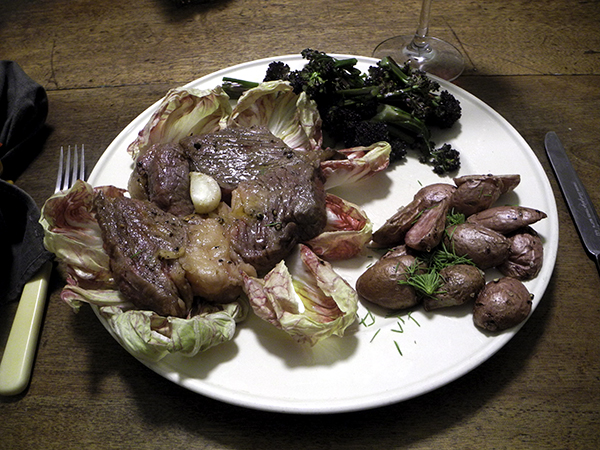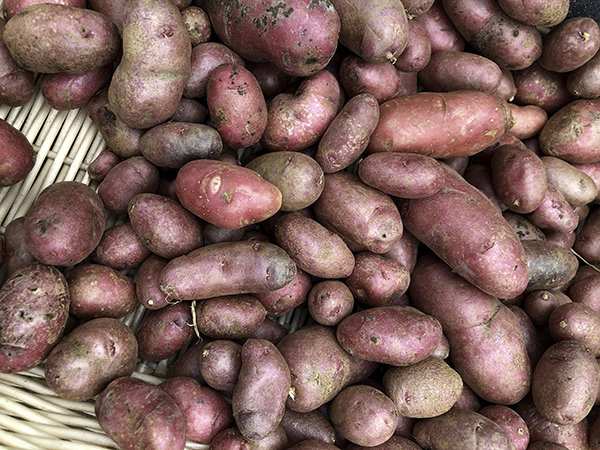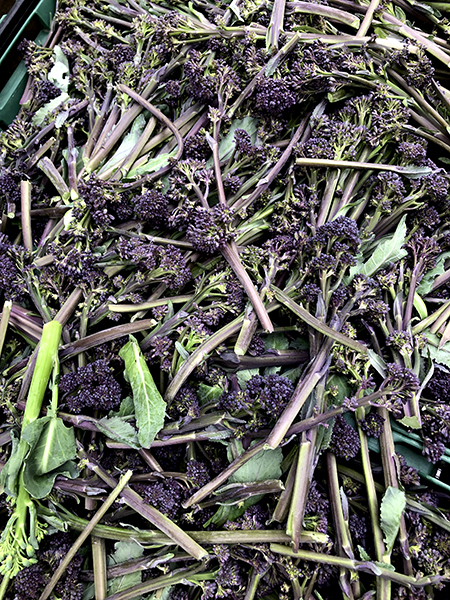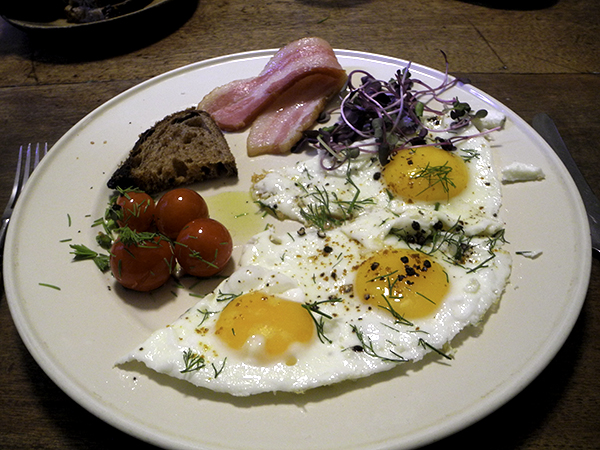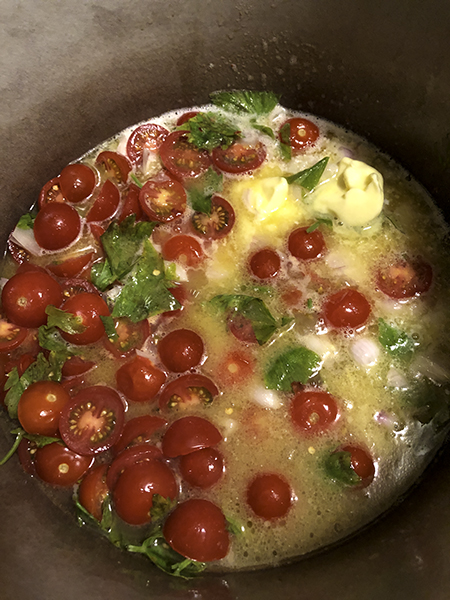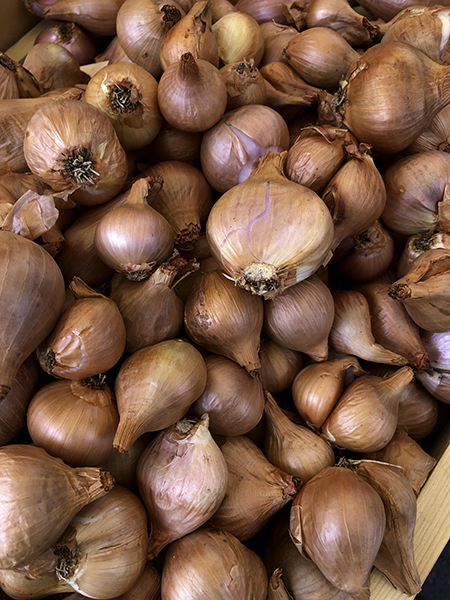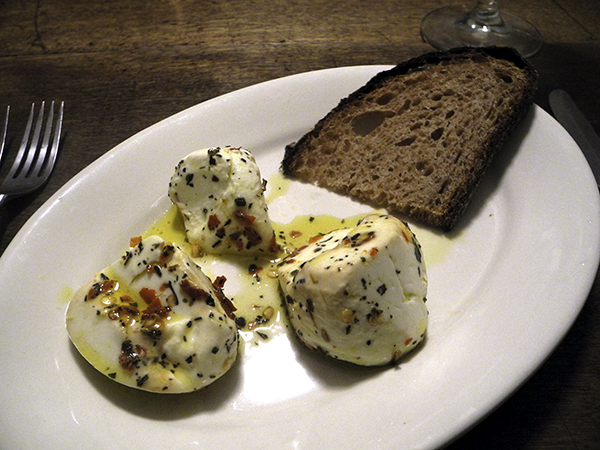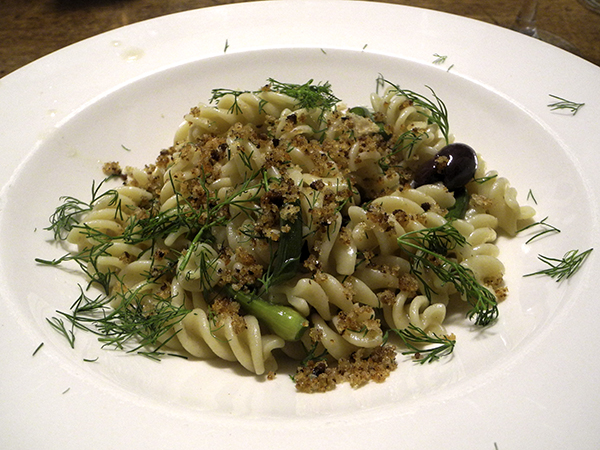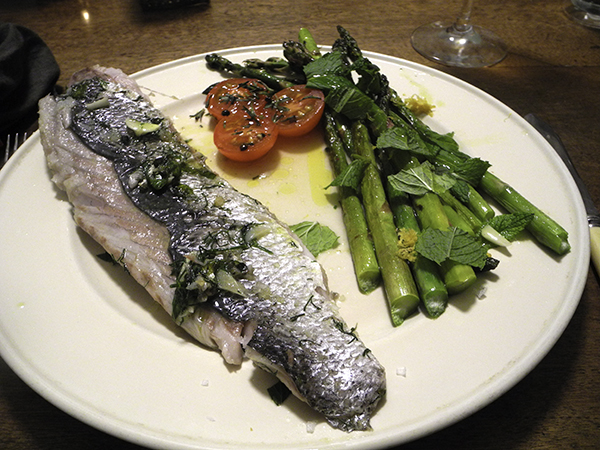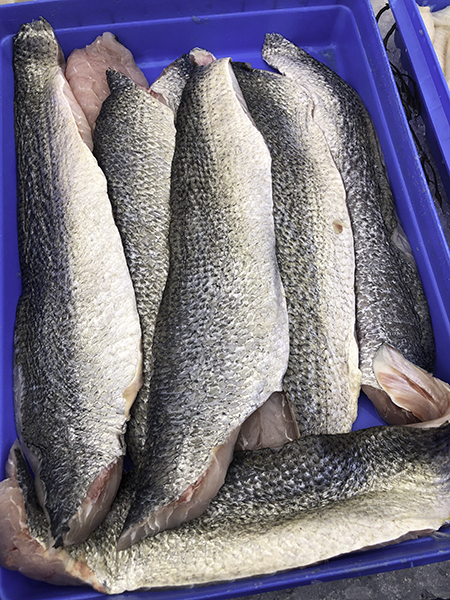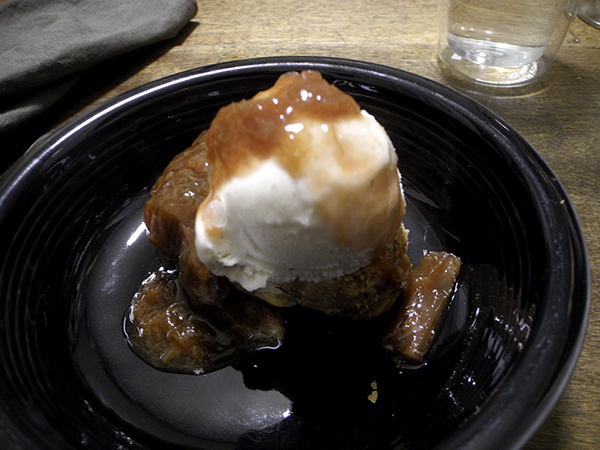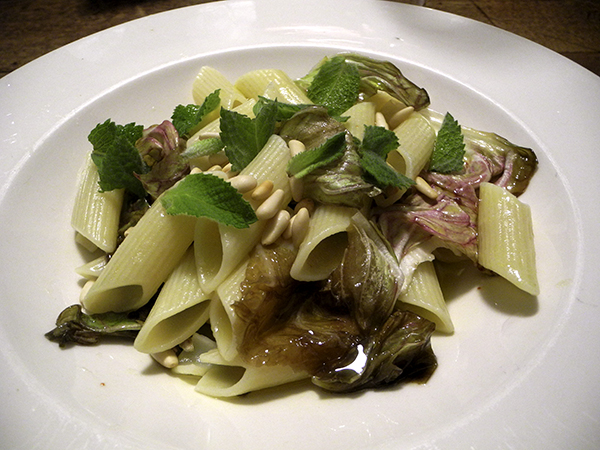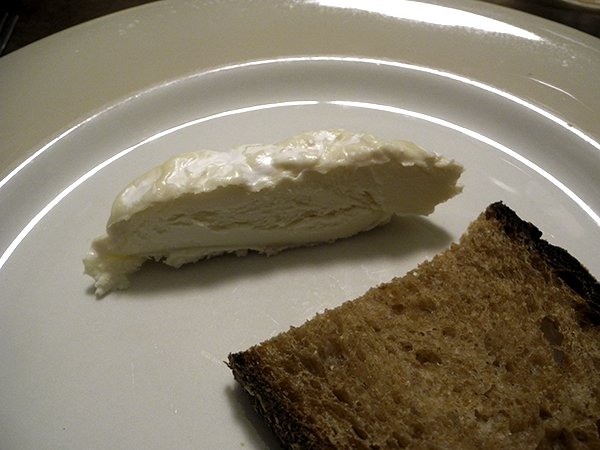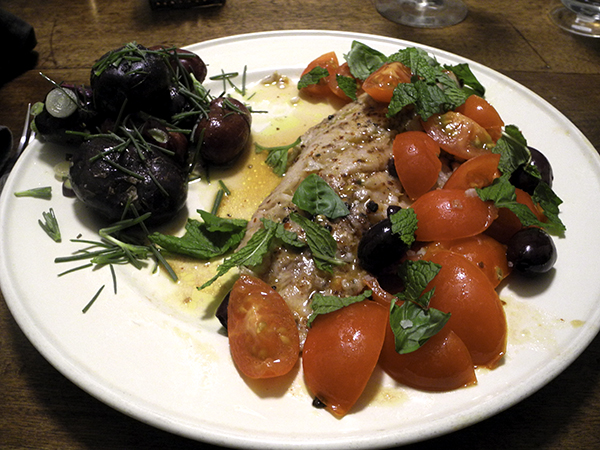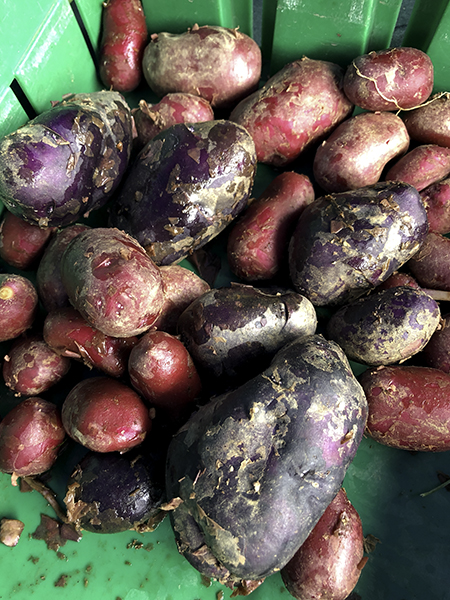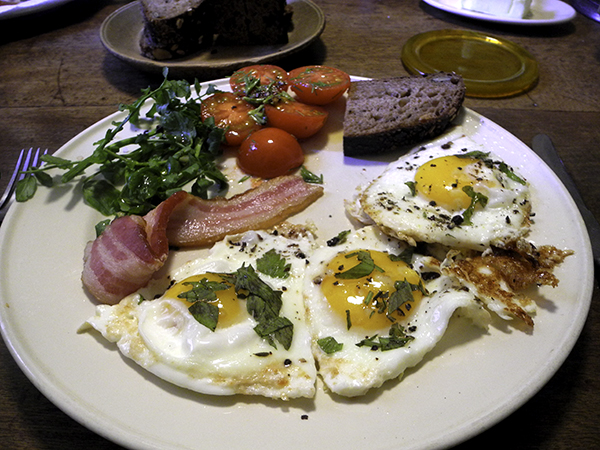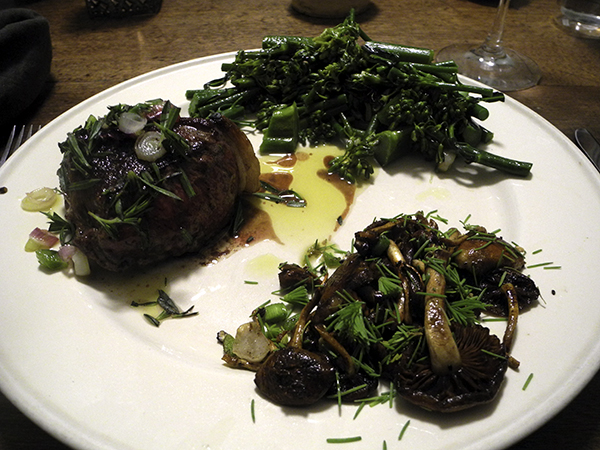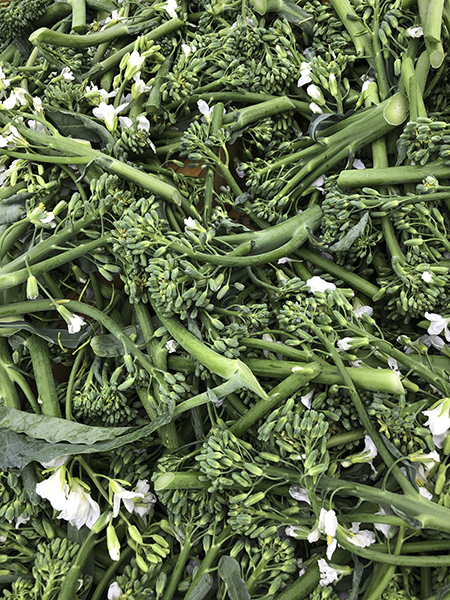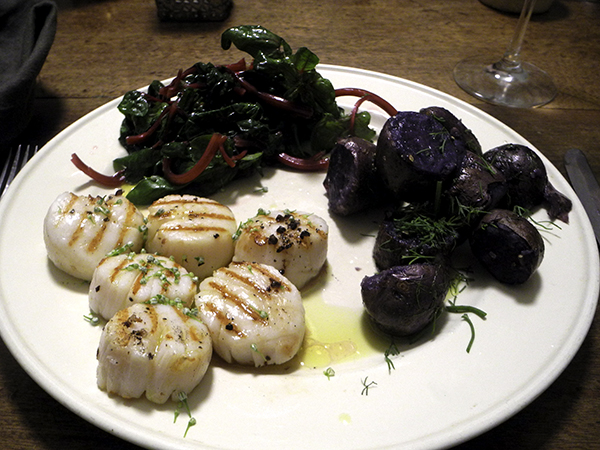
I used to think it was autumn that was the most blessed season for vegetables, but moving through the unfolding surprises of spring, especially since they follow a season that has to be described as semi desert, I might have to reconsider that thought.
Onion buds, for starters, and there will be more of that sort of thing coming up.
- twelve sea scallops (12 ounces) from P.E. & D.D. Seafood, rinsed, dried very thoroughly with paper towels, seasoned with local sea salt and freshly-ground black pepper, briefly grilled (90 seconds on each side) in a medium size square enameled cast iron pan, finished with a squeeze of juice from a Chelsea Whole Foods Market organic lemon, then a scattering of a fabulous spring treat, the tiny bursting seeds inside a blossoming onion from Norwich Meadows Farm, and a drizzle of olive oil
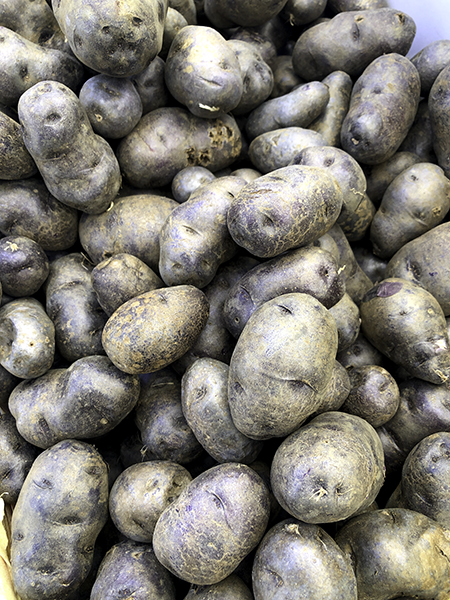
- fifteen ounces of Magic Molly purple potatoes from Tamarack Hollow Farm, boiled in well-salted water, drained, dried in the still-warm vintage Pyrex glass pot, rolled in a little olive oil, seasoned with sea salt and freshly-ground black pepper, garnished with chopped dill from Stokes Farm

- a large bag (9 ounces or so) of beautiful red-vein tender spring spinach from Norwich Meadows Farm, washed in several changes of water, drained, very gently wilted (that is, not reduced too far) inside a large, very heavy, high-sided tin-lined copper pot in a little olive oil in which one large clove of spring garlic from Michisk’s Farm in Flemington, NJ, quartered, had first been allowed to sweat, seasoned with salt, black pepper, drizzled with a little organic lemon and a bit more of the olive oil
- the wine was a French (Corsica/Vin de Pays de l’Ile de Beaute) rosé, Domaine Poli Niellucciu – Rosé 2018, from 67Wine
- the music was the really wonderful album, ‘Sonatas and Other Interludes: Pedja Muzijevic’, chosen because we had just returned from his performance in a concert, ‘Bach Dialogues’, at the Dimenna Center for Classical Music: Mary Flager Cary Hall, another of his brilliant programs incorporating music from different centuries
